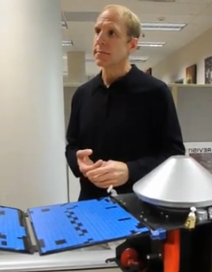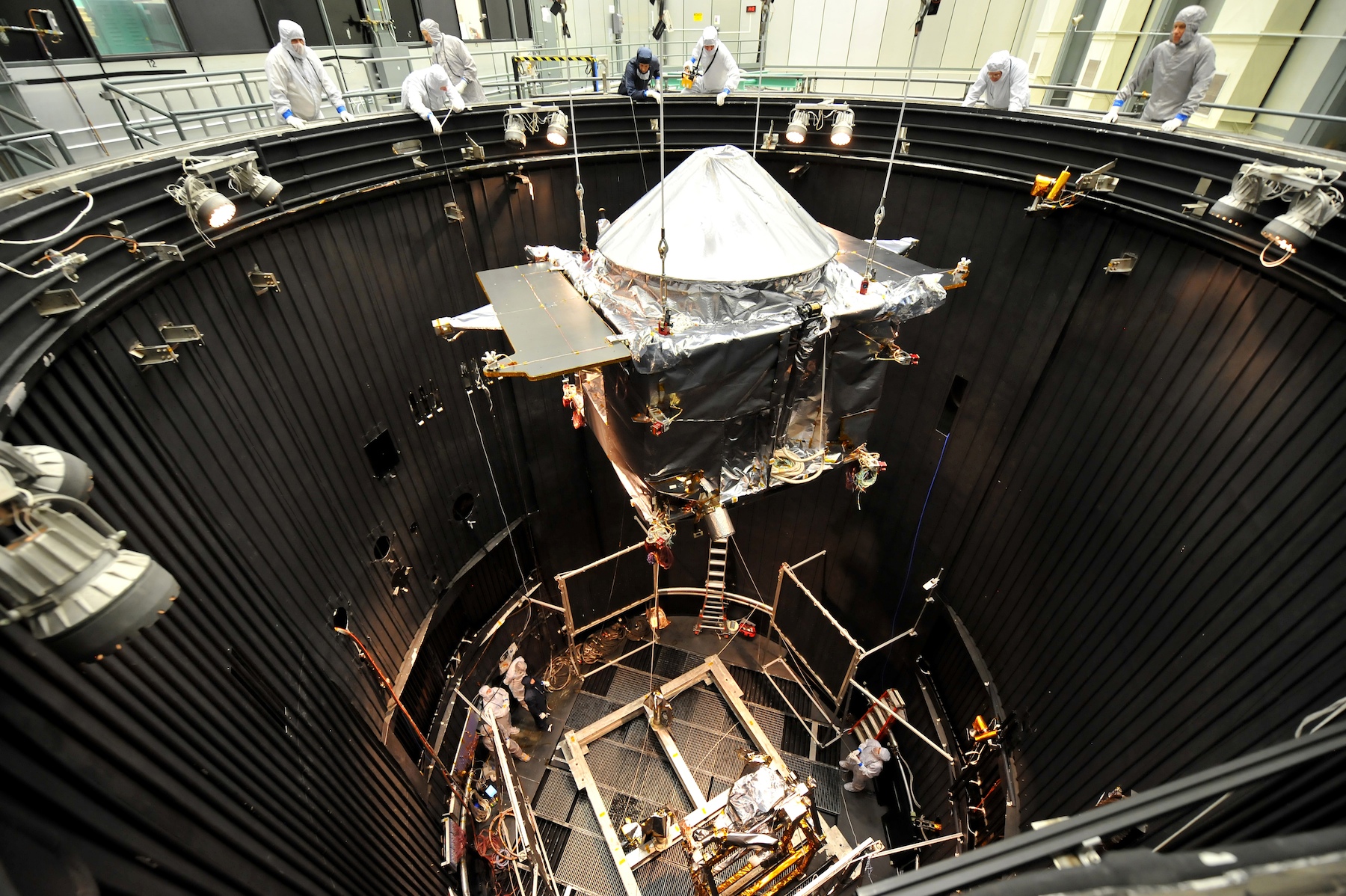On Sept. 21, 2014, the Mars Atmosphere and Volatile Evolution spacecraft will complete roughly 10 months of travel and enter orbit around the Red Planet.
The orbit-insertion maneuver will be carried out as the spacecraft approaches Mars, wrapping up an interplanetary journey of 442 million miles (711 million kilometers). Six thruster engines will fire briefly for a “settling” burn that damps out deviations in pointing. Then the six main engines will ignite two by two in quick succession and will burn for 33 minutes to slow the craft, allowing it to be captured in an elliptical orbit.
This milestone will mark the culmination of 11 years of concept and development for MAVEN, setting the stage for the mission’s science phase, which will investigate Mars as no other mission has.
“We’re the first mission devoted to observing the upper atmosphere of Mars and how it interacts with the sun and the solar wind,” said Bruce Jakosky, principal investigator for MAVEN at the University of Colorado in Boulder.
These observations will help scientists determine how much gas from Mars’ atmosphere has been lost to space throughout the planet’s history and which processes have driven that loss.
En route
Procedures to line up MAVEN for proper orbit insertion began shortly after MAVEN launched in November 2013. These included two trajectory-correction maneuvers, performed in December 2013 and February 2014.
Calibration of the mission’s three suites of science instruments—the Particles and Fields Package, the Remote Sensing Package and the Neutral Gas and Ion Mass Spectrometer—was completed during the cruise phase to Mars.
“Every day at Mars is gold,” said David Mitchell, MAVEN’s project manager at NASA’s Goddard Space Flight Center in Greenbelt, Maryland. “The early checks of instrument and spacecraft systems during cruise phase enable us to move into the science collection phase shortly after MAVEN arrives at Mars.”
The voyage also gave the team an opportunity to take data on the interplanetary solar wind using the Fields and Particles Package.
Meanwhile, teams in California, Colorado, and Maryland carried out rehearsals of the entire orbit insertion twice. The science team also performed a weeklong simulation of the planning and implementation required to obtain science data. Two months prior to arrival at Mars, all instruments were turned off, in preparation for orbit insertion.
Into orbit
During orbit insertion, MAVEN will be controlled by its on-board computers. By that time, the team will have uploaded the most up-to-date information about the spacecraft’s location, velocity and orientation. The insertion instructions will have been updated, and the fuel valves will be open, to warm the fuel to an operating temperature of about 77 to 79 degrees Fahrenheit (25 to 26 degrees Celsius).
If all goes well, the spacecraft will need no further commands from the ground. The important exception is that final trajectory corrections could be made, if needed, 24 hours or 6 hours prior to insertion. That would only happen, however, if the navigation team concluded that the spacecraft was coming in at too low of an altitude.
Otherwise, during the last 24 hours, the spacecraft will carry out preprogrammed procedures to make all systems as “quiet” as possible, which is the safest condition for orbit insertion. These steps include automatically executing a new version of the fault protection, which will tell the craft how to react to an on-board component anomaly leading up to or during orbit insertion.
In addition, the spacecraft will have to reorient itself so that the thrusters are pointed in the correct direction for the burn. In this final orientation, MAVEN’s high-gain antenna, which is used for most communication with the spacecraft, will point away from Earth. During that period, MAVEN’s low-gain antenna will be used for limited communication capacity at a reduced data rate.
At last, the insertion will begin. For the next 33 minutes, the craft will burn more than half the fuel onboard as it enters an orbit 236 miles (380 kilometers) above the northern pole.
Three minutes after the engines turn off, the MAVEN computers will reinstate the normal safeguards, reorient the spacecraft to point the high-gain antenna toward Earth, and reestablish normal communications. At that point, MAVEN will transmit the data obtained during the insertion back to Earth, along with information on the state of the spacecraft, and the MAVEN team will learn if everything worked properly.
“Then, there will be a sigh of relief,” said Carlos Gomez-Rosa, MAVEN mission and science operations manager at Goddard.
Later, the team will upload new instructions for the science portion of the mission, as well as turn on and check out the science instruments.
New view of Mars
The team will perform six maneuvers to move the spacecraft from its insertion orbit into the four-and-a-half-hour orbit that will be used to gather science data.
This science orbit will be elliptical, with the spacecraft flying about 90 miles (approximately 150 kilometers) above the surface at periapsis, or closest point, in the orbit to “sniff” the upper atmosphere. At apoapsis, the farthest point from the surface, MAVEN will pull back 3,900 miles (roughly 6,300 kilometers) to observe the entire atmosphere.
With each pass, MAVEN will make measurements of the composition, structure and escape of atmospheric gases.
“MAVEN’s orbit through the tenuous top of the atmosphere will be unique among Mars missions,” said Jakosky. “We’ll get a new perspective on the planet and the history of the Martian climate, liquid water and planetary habitability by microbes.”








